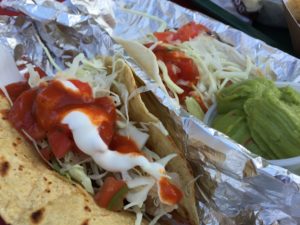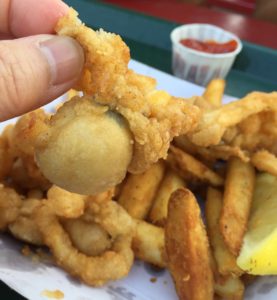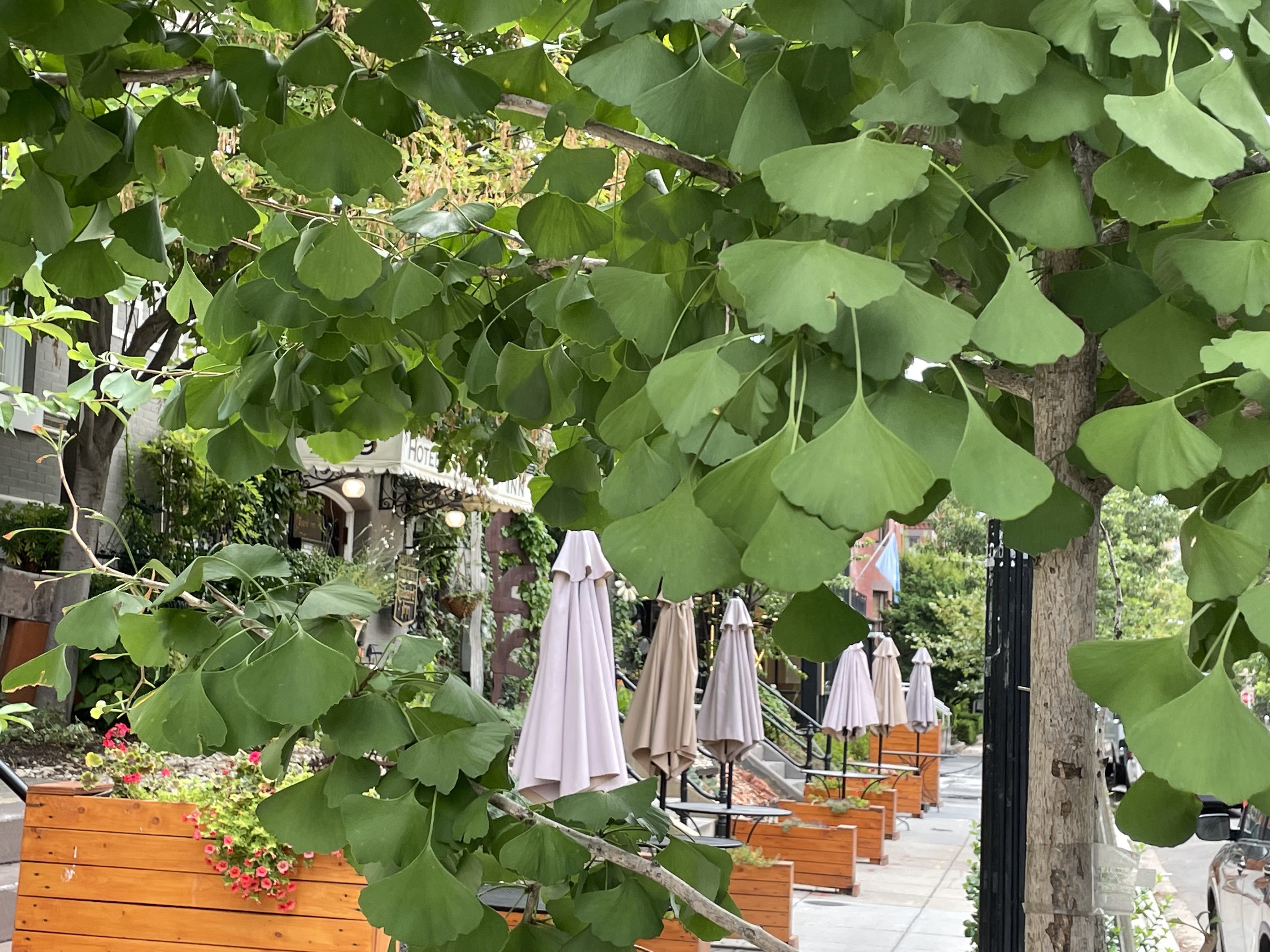So I had my first New England clam bellies and clam strips. Battered and deep fried, these are very popular seafood most commonly found along road-side shacks.
 I guess the whole experience eating these kinds of mollucks is to eat it where they are eaten historically and traditionally. From the unassuming and humble shack. Apparently fried clams have been around since the early 1900s when someone had a lot of clams and business was not as busy as always.
I guess the whole experience eating these kinds of mollucks is to eat it where they are eaten historically and traditionally. From the unassuming and humble shack. Apparently fried clams have been around since the early 1900s when someone had a lot of clams and business was not as busy as always.
Those famous words: how about we fry some clams up? They tried different batters and techniques–dipping in milk, or buttermilk, and tossing in flour, or cornmeal and da-da! New Englanders have been eating them ever since.
You find these shacks all over the New England coast. We were in Maine last year and ate at a lot of lobsters at similar shacks. Some of them get quite elaborate, with second floor decks and barbecue roasters outdoors.
Eating outdoors at these wooden picnic tables and benches is great, especially when the summers are not too hot. You never have to worry about messing up, spilling horseradish cocktail sauce or inadvertently squirting lemon juice to people around you.
We ate at this clam shack in Mystic, Connecticut, the town made famous by the movie Mystic Pizza about two waitresses in this cute little fishing town. The film might have been one of Julia Roberts’ earliest films.
There’s Russ trying to put in our order. And a close-up of their menu, posted right below the window where you order. There’s a lot served here–typical American fare that we in Asia are familiar with, hamburgers, hotdogs and deep fried onion rings, and French fries, of course.

What’s local? I asked Ali, Russ”s girlfriend, whose family we were visiting in Southington, Connecticut, an hour away.
Fried clam bellies and strips, she said. So I ordered them. Checking out the the menu, it occurred to me that I also had to have clam chowder of course. New England Clam Chowder since we were there. Here’s our wonderful spread.

Ali got a lobster roll, which is lobster in a hot dog bun, drizzled with mayo. Ted and Russ got some fish tacos, which I’m sure wasn’t around in the early 1900s.


I didn’t know the difference between clam bellies and clam strips. But its fairly obvious once you see it.
Bellies:

The belly is the cute, rounded body of the clam, the part that gives the clam meat. What a fat, juicy clam it was. Look at the belly. It’s really belly-like–perfect name. This one tasted like a deep fried oyster.
Back in Singapore where I grew up we almost never eat mollusks deep fried. Instead they are steamed or poached or stir-fried in a delicious garlic with ginger and black bean sauce. The commonest clam that we enjoy is the humble See Hum, a rounded clam that lives on the mud floor and sells for next to nothing. We eat these poached, shucked at the table and dipped in chili sauce.
See Hum is one of the ingredients in our iconic noodle, Char Kway Teow (fried rice noodles.) It’s my to-die-for food, way more complex and delicious than any other fried Asian noodles. Sorry, Mee Goreng, Pad Thai or Pad See Ew. Other ingredients include beansprout, pork, prawn, squid and Chinese sausage. I know squid turns some people off–believe me, it tastes a lot better than it sounds. To see a picture of Char Kway Teow, click here. Try to locate the See Hum. Its on the top left part of the plate of noodles.
In this dish the clams are tossed into the fried noodle at the end and usually left a little under cook. Like oysters and other mullusks, they have that slippery, slimy, juicy texture that can make some people balk. My sister hates it.
Well, the New England clam belly is like a size triple-X See Hum which just ate too much dinner with beer. It’s beautifully round. It soft and creamy inside, like the fleshy body of the oyster and a large see hum. The first bite into is springy, then you get the soft insides. Confession: you can eat only so many, maybe five for me. These are tiny, but it is quite filling. I’m sure it loaded with protein.
Here are the strips:

What’s the strip? It’s the “foot” of the clam, one site said. Really? That’s not helpful at all.
So I had to look for the anatomy of a clam and watched some biology videos. The clam’s fascinating. Sometimes I forget these are living creatures. I saw giant clams when we went snorkeling in the Philippines but have never seen live clams swimming, unless you count the clams in The Little Mermaid.
Did you know a clam has an anterior and a posterior? Maybe I found out more than I bargained for. I now know that the belly with the soft inside is where all the organs of the clam are. Now I know I’m eating stomach, intestines, gonads, kidneys, heart and whatever. Great.
Marine biologists have given interesting names to the parts of the clam. Scientists follow no grammar rules about mixing metaphors. The poor clam has a (door) hinge. Like a fish it has gills but is also personified with a body (the belly), foot, mantle (cloak, not fire place), mouth and a cute little butt (euphemism for another scientific name for where it passes out stuff.)
Where is the foot? Vis-a-vis the strip?
We can spot it easily in a steamed clam. The gills and mantles are the thin flaps that wrap around belly. The body is the perfectly round part. The foot is the muscular part that is attached to the outside rim of the soft belly, like how dorsal fins are attached. The clam uses the foot to burrow into the sand.
I guess that’s why strips (or bellies) are not cheap because that part has to be trimmed from the belly and separated and sold for deep frying. There was a lot of work done and developed before the New Englanders came up with Fried Clam Bellies and Strips. This gives me a deep appreciation of the fried clam.
Now I know.



